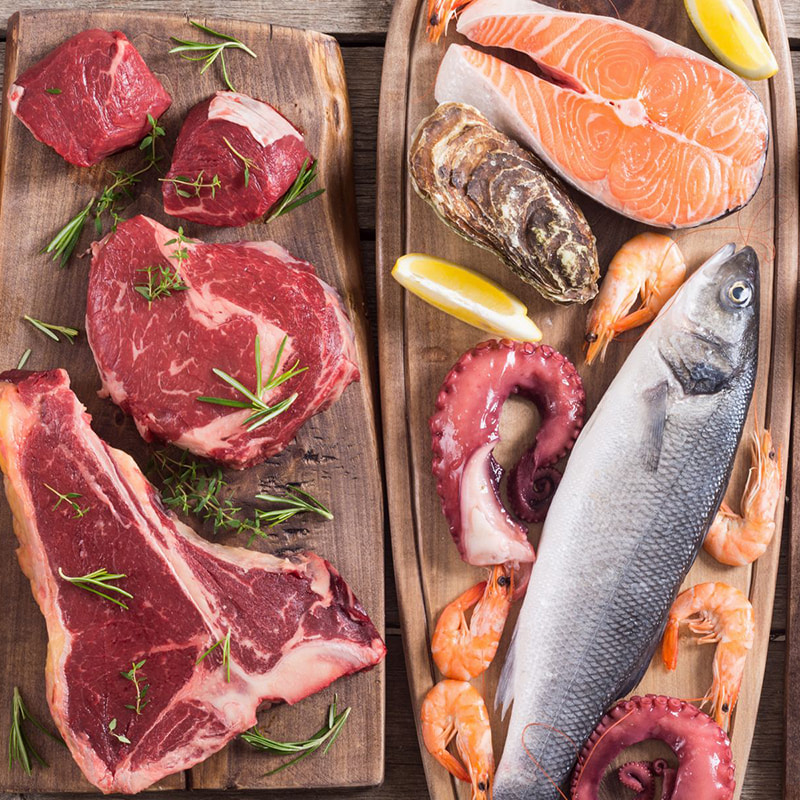What are the advantages of freeze-drying equipment for meat and seafood compared to conventional drying or freezing?
Preservation of Nutritional Value in Meat and Seafood
One of the key advantages of freeze-drying equipment for meat and seafood compared to conventional drying or freezing is the preservation of nutritional components. Freeze-drying operates under low temperature and vacuum conditions, which minimizes nutrient degradation. In conventional air drying, high temperatures can cause the breakdown of proteins, vitamins, and essential fatty acids, particularly in seafood that contains sensitive omega-3 fatty acids. Freezing, while effective, can lead to ice crystal formation that damages cellular structures and can cause nutrient leaching during thawing. Freeze-drying prevents such losses by sublimating moisture directly from solid to vapor, ensuring that proteins, minerals, and other bioactive compounds remain closer to their natural state. This is particularly important in seafood and meats where nutritional integrity is often a major selling point.
Extended Shelf Life Without Additives
Freeze-drying equipment offers a significant advantage in extending the shelf life of meat and seafood without the need for chemical preservatives. By reducing moisture content to extremely low levels, microbial growth is inhibited, and enzymatic activity slows considerably. Conventional freezing extends shelf life but requires constant energy input to maintain low temperatures. Air drying extends shelf stability but may not sufficiently eliminate water content to the same degree, leaving some risk for spoilage or microbial activity. Freeze-dried products, once sealed in moisture-proof packaging, can last for years under ambient conditions. This advantage is particularly beneficial for industries that supply emergency food kits, military rations, or long-term storage products.
Retention of Sensory Qualities
Meat and seafood products processed through freeze-drying equipment retain much of their original sensory profile, including taste, color, and texture. Conventional drying often darkens meat and seafood, alters flavor, and produces a tougher texture due to heat exposure. Freezing can preserve appearance but may lead to textural damage from ice crystallization, particularly in delicate seafood such as shrimp or scallops. Freeze-drying avoids these problems by gently removing moisture without applying high heat. When rehydrated, freeze-dried meat and seafood recover their original texture more effectively, making them suitable for applications that require high-quality reconstitution, such as premium ready-to-eat meals.
Lightweight and Easy Transportation
Another advantage of freeze-drying equipment for meat and seafood is the significant reduction in product weight due to moisture removal. Water accounts for a large percentage of both meat and seafood weight, and its removal results in lighter final products. Compared to frozen goods, which retain their full water weight, freeze-dried products are more economical to ship and store. This is a valuable advantage for logistics in both domestic and international trade. In contrast, conventional air drying reduces weight but may compromise quality to a greater degree. Freeze-drying achieves both lightweight products and high preservation of quality, offering a balance beneficial to suppliers and distributors.
Improved Rehydration Capability
Freeze-drying equipment ensures that meat and seafood can be rehydrated quickly and effectively. The porous structure left behind after sublimation allows water to penetrate easily, restoring the food close to its original form. Conventional air drying often produces dense, rigid structures that are less able to absorb water effectively, leading to poor rehydration results. Frozen products may not require rehydration but need thawing, which can result in drip loss and texture degradation. Freeze-dried products, on the other hand, can be rapidly reconstituted with minimal nutrient or sensory loss, which is an advantage for consumers seeking convenience.
Microbial Stability and Food Safety
Microbial stability is another area where freeze-drying equipment for meat and seafood has advantages. The near-complete removal of moisture creates an environment where bacteria, molds, and yeasts cannot thrive. Air drying may leave enough residual water activity to support limited microbial growth, while freezing only suspends microbial activity without eliminating it. When frozen seafood is thawed, microbial activity resumes immediately. Freeze-drying not only halts microbial growth but also prevents rapid spoilage once packaging remains sealed. This ensures safer long-term storage and enhances confidence in product safety for consumers and distributors alike.
Energy Considerations and Long-Term Efficiency
While freeze-drying equipment can initially consume more energy during processing compared to conventional drying, the long-term benefits can outweigh these costs. Freeze-dried products do not require continuous refrigeration during storage or transport, unlike frozen meat and seafood. Air-dried products may also not require refrigeration, but their shorter shelf life and quality reduction can lead to higher waste levels. For industries aiming at global distribution or storage without reliance on cold-chain logistics, freeze-drying offers an energy-efficient alternative in the long run. The cost savings in transportation and storage often compensate for the higher initial processing energy demand.
Comparison of Product Qualities Across Methods
The differences between freeze-drying, conventional drying, and freezing methods for meat and seafood can be summarized in terms of nutrition, shelf life, sensory characteristics, and logistics. The table below provides a comparative overview:
| Aspect | Freeze-Drying | Conventional Drying | Freezing |
|---|---|---|---|
| Nutritional Retention | High retention of proteins and fatty acids | Moderate, heat-sensitive nutrients degraded | Good, but possible nutrient loss during thawing |
| Shelf Life | Several years at room temperature | Months, depending on moisture content | Months to a year under refrigeration |
| Sensory Qualities | Preserves color, flavor, and texture | Altered color, tougher texture | Good color, but texture damage from ice crystals |
| Weight | Very lightweight | Lighter than fresh, but denser structure | Heavy due to retained water |
| Rehydration | Fast and effective | Poor to moderate | Not applicable, requires thawing |
| Microbial Stability | High, moisture almost eliminated | Moderate, residual activity possible | Suspended growth, resumes after thawing |
| Storage and Transport | No refrigeration needed | No refrigeration, shorter shelf life | Cold chain required |
Applications in the Meat Industry
Freeze-drying equipment has found specific applications in the meat industry where product stability and quality are critical. Dried beef, chicken, and pork products are widely used in ready-to-eat meals, field rations, and outdoor food supplies. Freeze-dried meat retains its flavor and protein profile, making it a preferred choice for health-conscious consumers and specialized markets. Unlike air-dried meats, which can be tough or overly salty due to added preservatives, freeze-dried meat provides a natural option with minimal additives. Compared to frozen meats, freeze-dried products offer logistical flexibility since they can be transported easily without refrigeration.
Applications in the Seafood Industry
Seafood presents unique preservation challenges due to its high water content and delicate fatty acid composition. Freeze-drying equipment addresses these issues by providing stable products that retain their nutritional and sensory profiles. Fish fillets, shrimp, scallops, and squid are common seafood products that benefit from freeze-drying. Compared to conventional drying, which may impart unwanted odors or result in tough textures, freeze-dried seafood maintains closer resemblance to fresh products. Compared to freezing, which requires continuous cold storage, freeze-dried seafood products are more versatile for export and long-term storage, particularly in areas without reliable refrigeration infrastructure.
Consumer Convenience and Versatility
From the consumer’s perspective, freeze-dried meat and seafood provide convenience in terms of storage, preparation, and use. Unlike frozen products that need defrosting, freeze-dried items can be rehydrated quickly with hot water or incorporated directly into recipes. This is particularly appealing for outdoor enthusiasts, emergency food suppliers, and ready-to-cook meal producers. Air-dried products may be harder to prepare due to density and flavor changes. Freeze-dried products stand out for their balance of convenience and quality, offering a broader range of cooking and consumption options.
Suitability for Specialized Diets
Freeze-dried meat and seafood are often more compatible with specialized diets that focus on clean-label products. Since freeze-drying does not require chemical preservatives, salt, or sugar for preservation, the products remain suitable for health-focused markets. In contrast, conventional drying methods often involve additives to stabilize or enhance flavor. Frozen products do not always require additives but do pose logistical challenges for long-term storage. Freeze-drying equipment, therefore, provides food processors with a method that meets the needs of specialized diet markets while maintaining product integrity.
Contribution to Food Security
By enabling long-term storage and easy transport without reliance on cold-chain logistics, freeze-drying equipment for meat and seafood contributes significantly to food security. It ensures that protein-rich foods can be preserved and distributed to regions where refrigeration is limited or during emergencies where logistics are disrupted. Conventional drying methods may also serve this purpose but with reduced product quality. Freezing requires stable infrastructure that may not be available in all contexts. Freeze-drying offers a balanced approach by combining stability, quality, and safety, making it valuable in both commercial and humanitarian applications.
Economic Considerations
Although the initial investment in freeze-drying equipment for meat and seafood is higher compared to air drying or freezing equipment, the long-term economic advantages can be substantial. Reduced waste, lower transportation costs due to lighter weight, and elimination of cold-chain logistics all contribute to financial efficiency. Air drying may have lower upfront costs but results in products with limited market appeal due to quality changes. Freezing equipment has moderate costs but requires ongoing energy expenditures for cold storage and transport. Freeze-drying balances the equation by providing a higher-value product that meets both consumer expectations and market needs.
Summary of Advantages of Freeze-Drying Equipment
| Category | Freeze-Drying | Conventional Drying | Freezing |
|---|---|---|---|
| Nutritional Integrity | Well preserved | Partially degraded | Preserved, but losses during thawing |
| Shelf Life | Extended at room temperature | Limited | Dependent on cold chain |
| Sensory Quality | Maintained | Compromised | Good but texture may suffer |
| Logistics | Lightweight, no refrigeration | No refrigeration, reduced appeal | Cold chain required |
| Consumer Use | Convenient, fast rehydration | Less convenient | Requires thawing |

 English
English  русский
русский  中文简体
中文简体 







 +86- (0) 519-8578 6988
+86- (0) 519-8578 6988  +86-180 6875 7376
+86-180 6875 7376  emmy@jsblk.com
emmy@jsblk.com  Zhenglu Town, Tianning District, Changzhou City, Jiangsu Province, China
Zhenglu Town, Tianning District, Changzhou City, Jiangsu Province, China